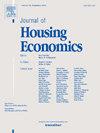信息提供不对称和洪水风险突出
IF 2.4
3区 经济学
Q3 ECONOMICS
引用次数: 0
摘要
本文考察了信息提供对住房市场洪水风险资本化的影响。我们利用了气候风险披露计划和随后在荷兰发生的洪水事件,使用了差异中的差异框架。结果表明,每年向洪水易发地区居民发送洪水风险通报信对房价的影响最小。相比之下,小规模洪水事件引发房价下跌3.4%,表明直接经验在影响价格调整方面的有效性。这种价格效应是短暂的,而且只在既能接触到信件又能亲身经历洪水的本地买家中观察到,而非本地买家仍然没有反应。我们还观察到,在提供洪水风险信息后,本地买家的待售时间和挂牌销售比有所增加,而出租住户的比例也有所上升。小规模、高学历和厌恶风险的家庭倾向于从高风险地区搬迁。本文的结果为政策制定者提供了见解,他们正在努力解决如何在面临日益增加的气候风险的情况下减少住房市场的信息不对称。本文章由计算机程序翻译,如有差异,请以英文原文为准。
Asymmetric information provision and flood risk salience
This paper examines the impact of information provision on the capitalization of flood risk in the housing market. We exploit a climate risk disclosure program and a subsequent flooding event in the Netherlands, using a difference-in-differences framework. The results indicate that annual flood risk communication letters sent to residents in flood-prone areas have minimal impact on housing prices. In contrast, a small-scale flood event triggers a 3.4 % decline in house prices, demonstrating the effectiveness of direct experience in influencing price adjustments. This price effect is short-lived and is observed only among local buyers who have access to both the letters and firsthand flood experience, while non-local buyers remain unresponsive. We also observe an increase in the time on market and listing-to-sales ratio among local buyers, alongside a rise in the renter-occupied household ratio following flood risk information provision. Small-sized, high-educated, and risk-averse families tend to relocate from the high-risk area. The results in this paper provide insights for policymakers grappling with how to reduce information asymmetry in housing markets in the face of increasing climate risks.
求助全文
通过发布文献求助,成功后即可免费获取论文全文。
去求助
来源期刊

Journal of Housing Economics
Multiple-
CiteScore
3.30
自引率
4.20%
发文量
35
期刊介绍:
The Journal of Housing Economics provides a focal point for the publication of economic research related to housing and encourages papers that bring to bear careful analytical technique on important housing-related questions. The journal covers the broad spectrum of topics and approaches that constitute housing economics, including analysis of important public policy issues.
 求助内容:
求助内容: 应助结果提醒方式:
应助结果提醒方式:


